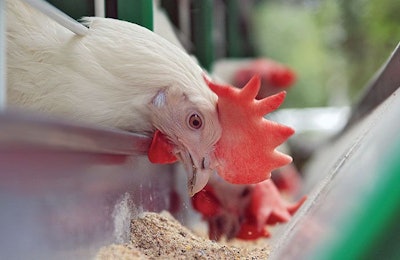
Immunity is a word with a different meaning to different people as it is difficult to define and practically measure in the field. Immunity can be understood as a dynamic system that adjusts its diverse defense mechanisms against a vast and quickly changing population of pathogenic microorganisms. Today, improving the animal’s own defense is considered a must among professionals working in an era where antibiotics are no longer politically correct.
So far, the majority of knowledge on the interaction between nutrition and animal immunity has been derived from work on additives that replace antibiotics. Within this context, improved immunity has been accepted as a desirable side effect but not as the main target. In fact, things should be in reverse order, because in order to reduce the usage of antibiotics we should first reduce our dependence on them, and then find additives that control microorganisms under those conditions when animals need further support.
Apart from the case of additives, classical nutrition has received sparse attention when it comes to immunity modulation. In practice, it is often assumed that nutrient requirements remain the same regardless of the immune/health status of the animal. But can this is be correct? For example, sick animals require a totally different profile of amino acids, favoring phenylalanine over lysine. The same is true for energy, but this is a rather obscure area as we often confuse energy with its sources. The case of minerals, macro- and micro-minerals alike, is equally ambiguous, although some inroads have been made with certain trace elements.
Vitamins in health and disease
The role of vitamins in immunity has been studied rather extensively in humans, and the general consensus is that they play a significant role. This is no surprise considering the myriad of functions in which vitamins participate. Translating human research into animal practice is not without its hurdles as human research focuses mostly on long-term diseases or diseases associated with adults and relatively unhealthy lifestyles. Nevertheless, we must find what vitamins and at what levels are required to achieve our own goal, which is to improve animal immunity.
Water- vs. fat-soluble vitamins
Vitamins are not a homogenous group of nutrients, as amino acids are. One great division exists between water- versus fat-soluble vitamins. Apart from the obvious physicochemical differences, it must be remembered that most fat-soluble vitamins are stored in the organism, whereas most water-soluble reserves rarely let for more than a few days. This differentiation alone creates a host of questions that we should work on to find suitable answers:
- Are fat-soluble vitamins mobilized at enough levels and promptly during an activation of the immune system?
- Should we strengthen fat-soluble reserves in healthy animals in anticipation of a disease challenge later in the production cycle?
- What is the best way to deliver water-soluble vitamins during and after a disease outbreak?
- How could we improve water-soluble reserves?
At this point, we should mention that work on most water-soluble vitamins is rather sparse and inconclusive, if only because sick animals do not consume enough feed — among other issues. Thus, for now we focus on those vitamins that are more straight-forward. Below is a primer on such vitamins and their role on improving immunity in animals.

This table offers an example of recommended levels by a commercial source to be used for the supra-nutritional purpose of immune enhancement.
Vitamin A is an important vitamin for the immune system as it is involved in the integrity and functioning of mucosa, which is the internal “skin” of the organism. Without a sound mucosal architecture, toxins and even some pathogens can pass through inside the system causing mayhem. This can be of particular importance to young animals receiving diets rich in anti-nutritional factors that damage such mucosal architecture.
Vitamin E is the primary example of a vitamin that is required in greater amounts when animals are prone to get sick. It is one of the most potent antioxidants and its unique role cannot be denied. This is why many nutritionists routinely use supra-nutritional levels in diets for young animals. It is currently understood that over-oxidation weakens the animal immune system, which in reverse implies that a robust immune system depends on adequate antioxidant nutritional support. Of course, the above is an oversimplification of the many functions of vitamin E, but it suffices as an illustration.
Vitamin D is a more obscure case, being obscured only by its pivotal role in bone metabolism. Nevertheless, much recent research has shown that vitamin D through its active metabolite 25OHD3 (calcidiol) plays a significant role in immunity. Here it suffices to mention that vitamin D receptors (signal receptors) are found in all immune cells. This means vitamin D can modify innate and adaptive immune reactions, playing a central role across the whole immune system as a major signaling molecule.
Vitamin C is the only water-soluble vitamin in this list and one that animals normally can synthesize by themselves. But it has been shown that under stressful conditions (thermal stress) vitamin C provides a shield against oxidative stress. The same can be argued for immune system activation, which is a most stressful condition. Vitamin C can also be provided through the water system.
Influencing immunity
It may be hypothesized that higher levels of fat-soluble vitamins may influence immunity through a longer-term perspective as they can be reserved in the body and be retrieved in times of dire need. In contrast, providing water-soluble-vitamins — to be identified — to healthy animals on a daily basis as a preventive measure could ensure success in improving their immune response at the time of a disease outbreak, whenever it happens. It is also possible that water-soluble vitamins administered at high levels during and after an outbreak may help animals cope better with disease and recovery. For all practical purposes, vitamin nutrition in the face of disease and/or in the absence of antibiotics must be re-evaluated.
Read more: Vitamin E in piglet feeds is not just another nutrient

















